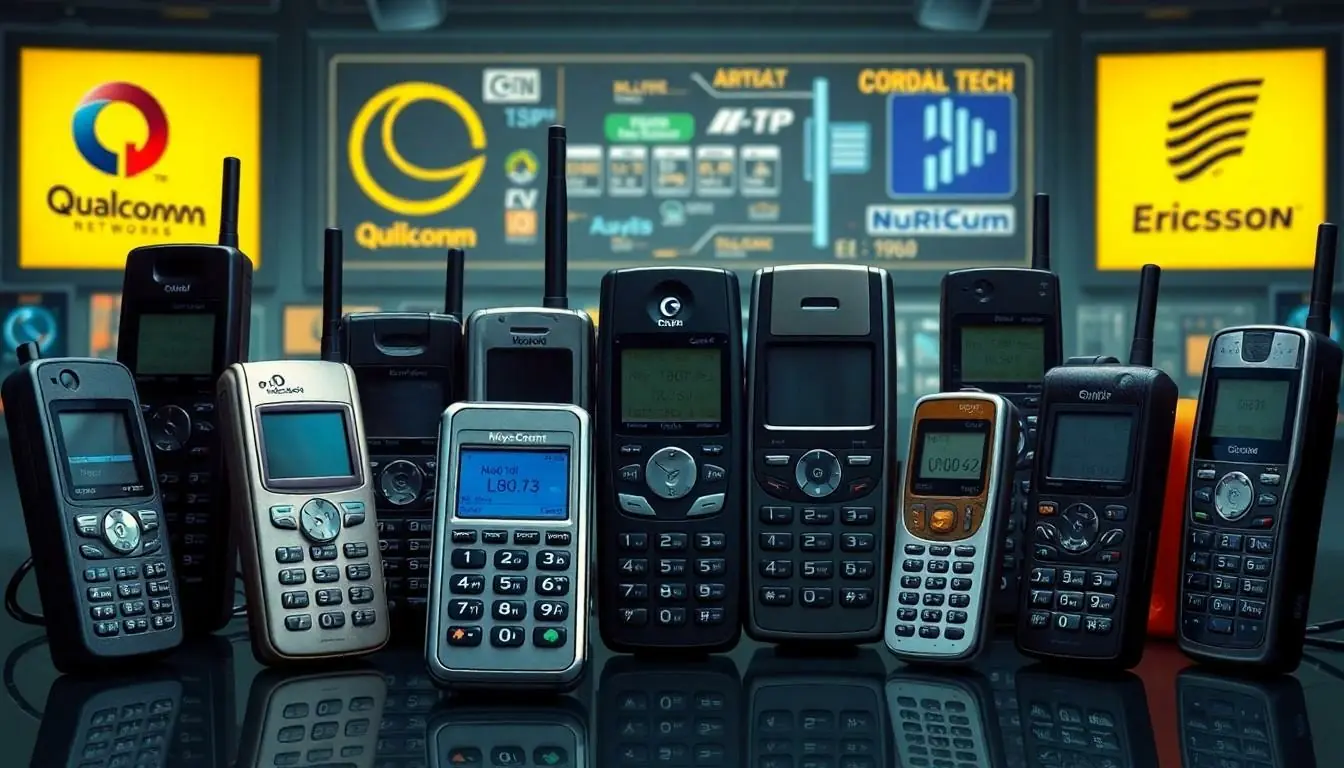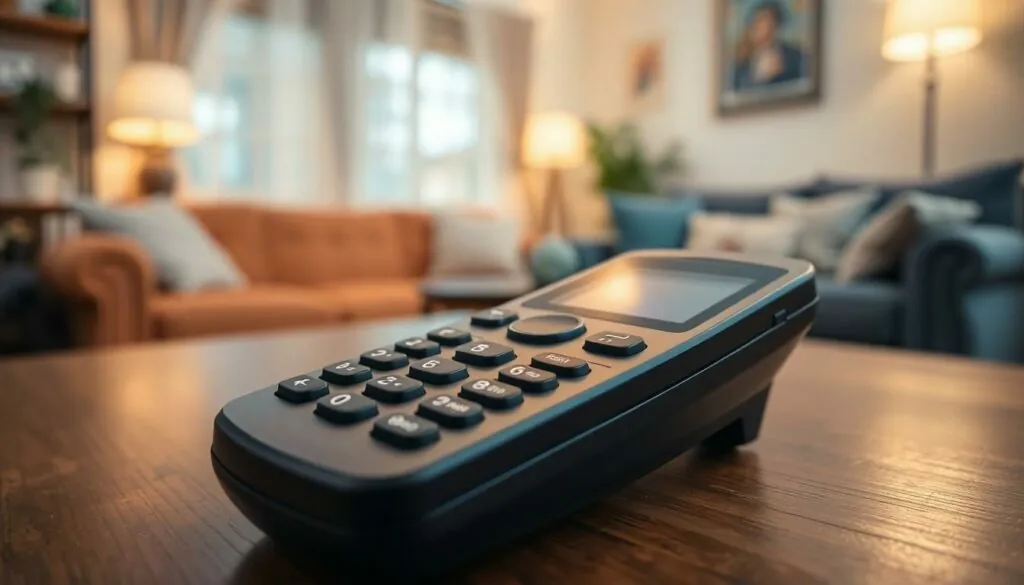In a world where smartphones reign supreme, CDMA phones might feel like the quirky uncle at a family reunion—slightly outdated but still charming in their own way. While everyone’s busy snapping selfies and streaming the latest cat videos, these devices quietly hold their ground, proving that sometimes, simpler is better.
CDMA, or Code Division Multiple Access, is like that reliable friend who always shows up when you need them. It’s a technology that’s been around the block, ensuring solid connectivity and call quality. With the rise of newer technologies, many might overlook these trusty gadgets, but they still have plenty of tricks up their sleeves. So, let’s dive into the world of CDMA phones and discover why they might just be the unsung heroes of mobile communication.
Table of Contents
ToggleOverview of CDMA Phones
CDMA phones utilize Code Division Multiple Access technology, a method that allows multiple signals to transmit simultaneously over a single channel. This technology ensures users experience consistent call quality and reliable connectivity. Smartphones may dominate the market, yet CDMA devices still hold importance, particularly in areas where network reliability is crucial.
Manufacturers like Qualcomm and LG have spearheaded the development of CDMA devices. These manufacturers integrate features that appeal to users seeking dependable communication without the complexities of smartphones. CDMA technology excels in voice communication. Its architecture minimizes dropped calls and interruptions, making it a popular choice in rural environments or locations with limited coverage.
Several carriers support CDMA technology, including Verizon and Sprint. Both providers offer a variety of CDMA phones that suit different needs and budgets. Affordability and accessibility often characterize these devices, making them appealing for users seeking basic features without extra frills.
Devices designed for CDMA networks typically feature removable batteries and physical keypads. These features enhance ease of use for many people who prefer simplicity over the complexity of touch screens. Although the shift toward newer standards like LTE and 5G occurs, CDMA’s legacy continues to provide a solid option for those valuing stability and clarity in mobile communication.
Many CDMA phones also support various applications, though their functionality may not match that of the latest smartphones. These devices demonstrate that even in an advancing tech landscape, there’s a niche for reliable, straightforward communication solutions.
History of CDMA Technology

CDMA technology has its roots in the early 1990s, significantly impacting mobile communication. This approach allowed multiple users to share the same frequency, enhancing efficiency in signal transmission.
Evolution of CDMA Standards
Initial CDMA standards emerged with IS-95 in 1993, which revolutionized voice communication. The introduction of cdma2000 in 1999 expanded capabilities, including support for data services. Later, 3G CDMA technology further improved speed and network efficiency. As demands for faster data transmission grew, subsequent advancements led to the development of EV-DO, allowing for enhancements in mobile broadband access.
Key Players in CDMA Development
Qualcomm played a pivotal role in the creation and promotion of CDMA technology. Their innovations laid the groundwork for the widespread adoption of this communication protocol. Other significant contributors include Nortel Networks and Ericsson, which helped expand CDMA infrastructure and devices. Sprint and Verizon also supported the technology, ensuring it reached a large user base. Together, these companies have shaped the landscape of mobile communication through continuous innovations and solid support for CDMA technology.
Advantages of CDMA Phones
CDMA phones offer several benefits, making them a reliable choice for users prioritizing dependable communication.
Better Call Quality
Call quality stands out as a primary advantage of CDMA technology. This technology minimizes dropped calls and interruptions, ensuring clear conversations. Users report fewer instances of background noise compared to other technologies. Solid connectivity remains crucial, especially in rural areas where network coverage is often limited. CDMA’s ability to maintain signal strength in challenging environments enhances the user experience. Overall, many individuals value the consistency and reliability of CDMA networks for voice communication.
Enhanced Battery Life
Battery life represents another significant benefit of CDMA devices. Most CDMA phones feature removable batteries, allowing users to replace them as needed. These phones typically consume less power during calls thanks to efficient signal processing. Users notice extended usage without frequent recharging compared to smartphones with advanced features. Overall, this focus on energy efficiency appeals to those seeking simplicity and endurance. CDMA’s emphasis on longevity supports active lifestyles where reliable battery performance is key.
Disadvantages of CDMA Phones
Despite their strengths, CDMA phones present several disadvantages that users should consider.
Limited Network Coverage
Limited network coverage affects CDMA phones. Rural users may find connectivity challenges in specific regions. Major carriers like Verizon and Sprint offer extensive networks, but not all areas enjoy equal service quality. Users in remote locations may experience weak signals, impacting call clarity. Comparatively, GSM networks often provide broader coverage options, including international roaming. This limitation can hinder those needing reliable communication in less populated areas.
Compatibility Issues
Compatibility issues pose a challenge for CDMA phones. Many newer devices primarily utilize GSM technology, leading to difficulties for users wanting to switch carriers. While devices may not interface smoothly with different networks, this can restrict options for upgrades or changes. Users may also encounter issues with software updates, as compatibility extends beyond hardware to the technology itself. When traveling internationally, CDMA phones might offer limited functionality, reducing user flexibility. Choosing a device that caters to GSM compatibility could prove advantageous for those seeking wider options.
Popular CDMA Phone Models
Several popular CDMA phone models stand out in the market. Users appreciate devices from brands like Qualcomm and LG for their reliability and quality.
Review of Top Models
Samsung Galaxy S9 captivates users with its advanced camera and vibrant display. LG G6 offers a user-friendly interface and sharp visuals, making it a favorite among those who prefer simplicity. Motorola Moto E provides a budget-friendly option without sacrificing performance, appealing to cost-conscious consumers. Each model combines solid call quality and dependable connectivity, ensuring they meet the needs of various users.
Customer Feedback and Ratings
Samsung Galaxy S9 garners high ratings for its exceptional camera and smooth performance, consistently receiving feedback about reliability. LG G6 users often highlight ease of use and satisfactory call quality, contributing to positive reviews. Motorola Moto E receives praise for its affordability and battery life. Many customers express satisfaction with these CDMA models, showcasing how they maintain a loyal user base despite the rise of smartphones.
CDMA phones continue to hold a unique place in the mobile communication landscape. Their reliable connectivity and impressive call quality make them a practical choice for users who prioritize straightforward communication. While the market shifts toward smartphones and newer technologies, CDMA devices like the Samsung Galaxy S9 and LG G6 demonstrate that there’s still demand for these dependable options.
For those in rural areas or regions with limited service, the benefits of CDMA technology can’t be overlooked. With features like removable batteries and minimal dropped calls, CDMA phones cater to users who value simplicity and efficiency. As the tech world evolves, these devices remind us of the importance of reliable communication solutions.






